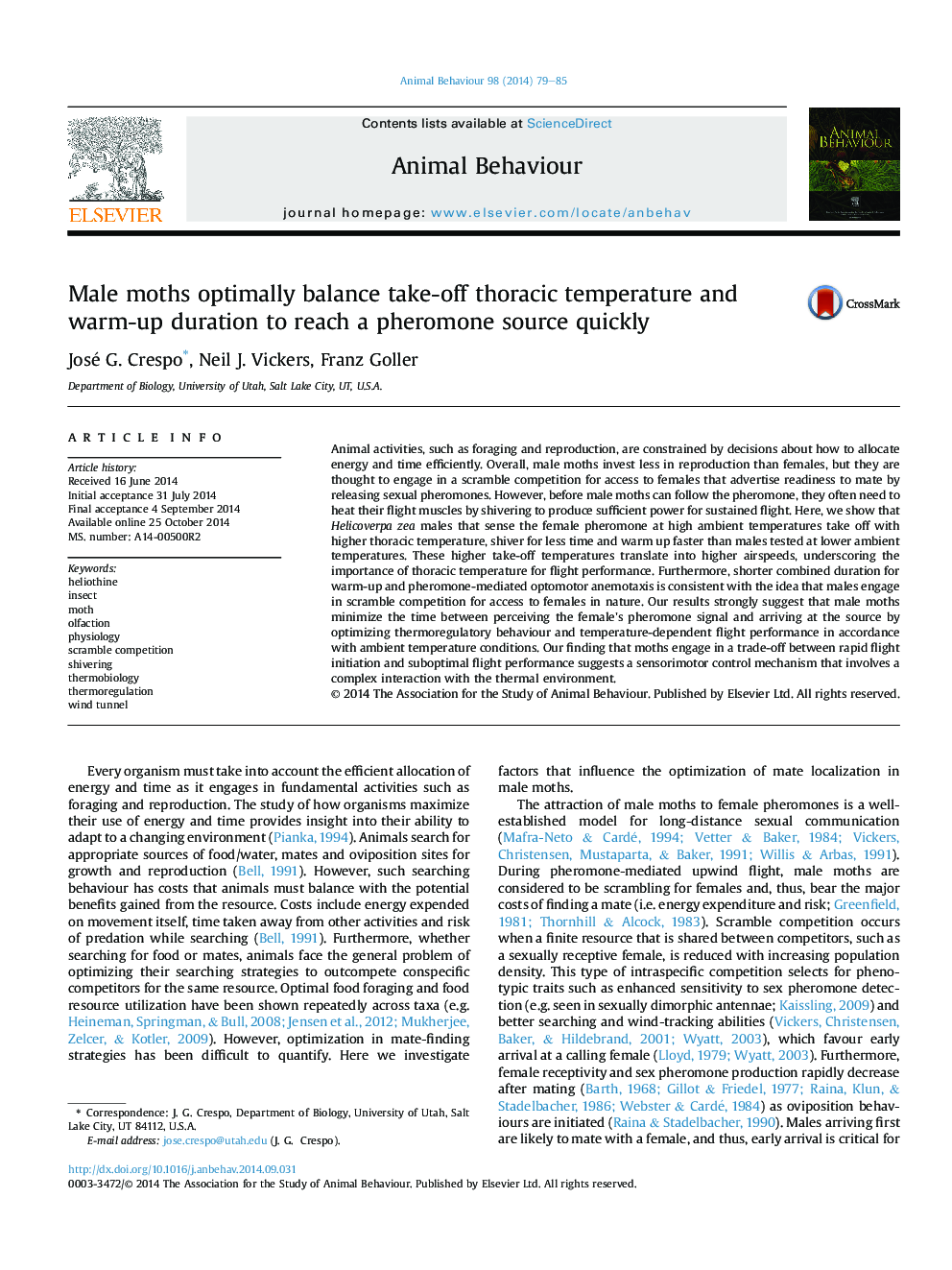| کد مقاله | کد نشریه | سال انتشار | مقاله انگلیسی | نسخه تمام متن |
|---|---|---|---|---|
| 2416328 | 1552230 | 2014 | 7 صفحه PDF | دانلود رایگان |
• At high ambient temperatures, male moths take off with higher thoracic temperature.
• Males also shiver for less time and warm up faster than at low ambient temperature.
• Higher thoracic temperatures at take-off allow males to attain faster airspeeds.
• Males minimize flight time by optimizing thermoregulatory behaviour.
• Males engage in scramble competition for access to females.
Animal activities, such as foraging and reproduction, are constrained by decisions about how to allocate energy and time efficiently. Overall, male moths invest less in reproduction than females, but they are thought to engage in a scramble competition for access to females that advertise readiness to mate by releasing sexual pheromones. However, before male moths can follow the pheromone, they often need to heat their flight muscles by shivering to produce sufficient power for sustained flight. Here, we show that Helicoverpa zea males that sense the female pheromone at high ambient temperatures take off with higher thoracic temperature, shiver for less time and warm up faster than males tested at lower ambient temperatures. These higher take-off temperatures translate into higher airspeeds, underscoring the importance of thoracic temperature for flight performance. Furthermore, shorter combined duration for warm-up and pheromone-mediated optomotor anemotaxis is consistent with the idea that males engage in scramble competition for access to females in nature. Our results strongly suggest that male moths minimize the time between perceiving the female's pheromone signal and arriving at the source by optimizing thermoregulatory behaviour and temperature-dependent flight performance in accordance with ambient temperature conditions. Our finding that moths engage in a trade-off between rapid flight initiation and suboptimal flight performance suggests a sensorimotor control mechanism that involves a complex interaction with the thermal environment.
Journal: Animal Behaviour - Volume 98, December 2014, Pages 79–85
